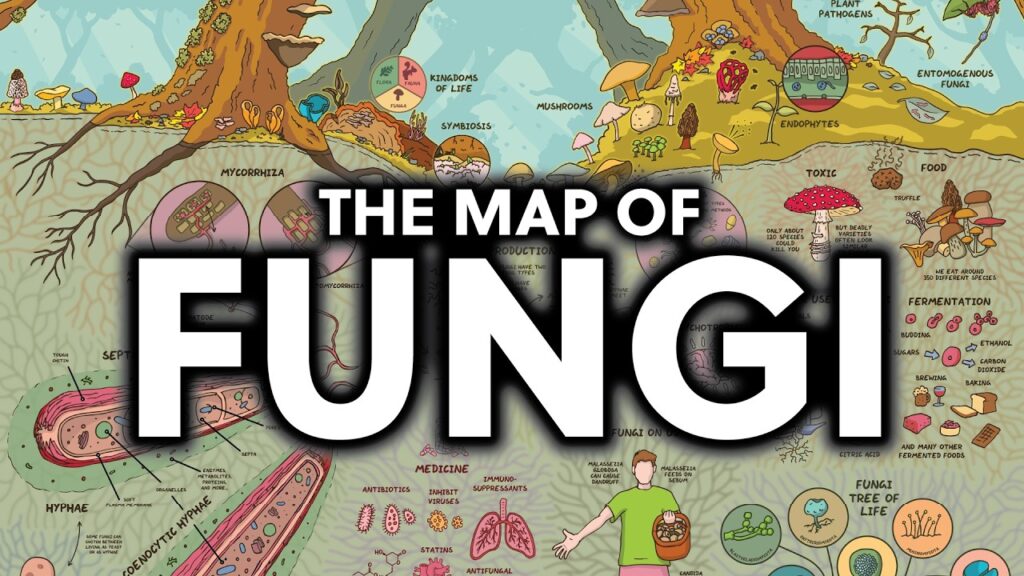
"Yes, this big map depicts the realm of the humble mushroom, which "shares the forest with the plants and the animals, but it's not a plant, and it's not an animal." And the mushroom itself, like we're used to seeing sprouting beneath our feet, is only a small part of the organism: the rest "lives hidden, out of sight, below ground. Beneath every mushroom is a fungal network of hair-like strands called the mycelium," which begins as a spore."
"The hugely diverse "fruiting bodies" that they push out of the surface have only one job: "to disperse the spores and grow the next generation." But only ten percent of fungi species actually do this; the rest don't produce anything we would recognize as mushrooms at all. About 150,000 species of fungi have been discovered so far. Though inanimate, they manage to do quite a lot, such as supplying nutrients to plants (or killing them), generating chemicals that have proven extremely useful"
Fungi exist largely as hidden mycelial networks beneath the surface, with visible mushrooms representing only the fruiting bodies that disperse spores. Fruiting bodies serve primarily to release spores and propagate the next generation, but only about ten percent of fungal species form recognizable mushrooms. Approximately 150,000 fungal species have been identified. Fungi interact with plants by supplying nutrients or causing disease and produce chemicals that have been highly valuable for human use. The mycelium originates from spores and consists of hair-like strands that form extensive underground networks.
Read at Open Culture
Unable to calculate read time
Collection
[
|
...
]